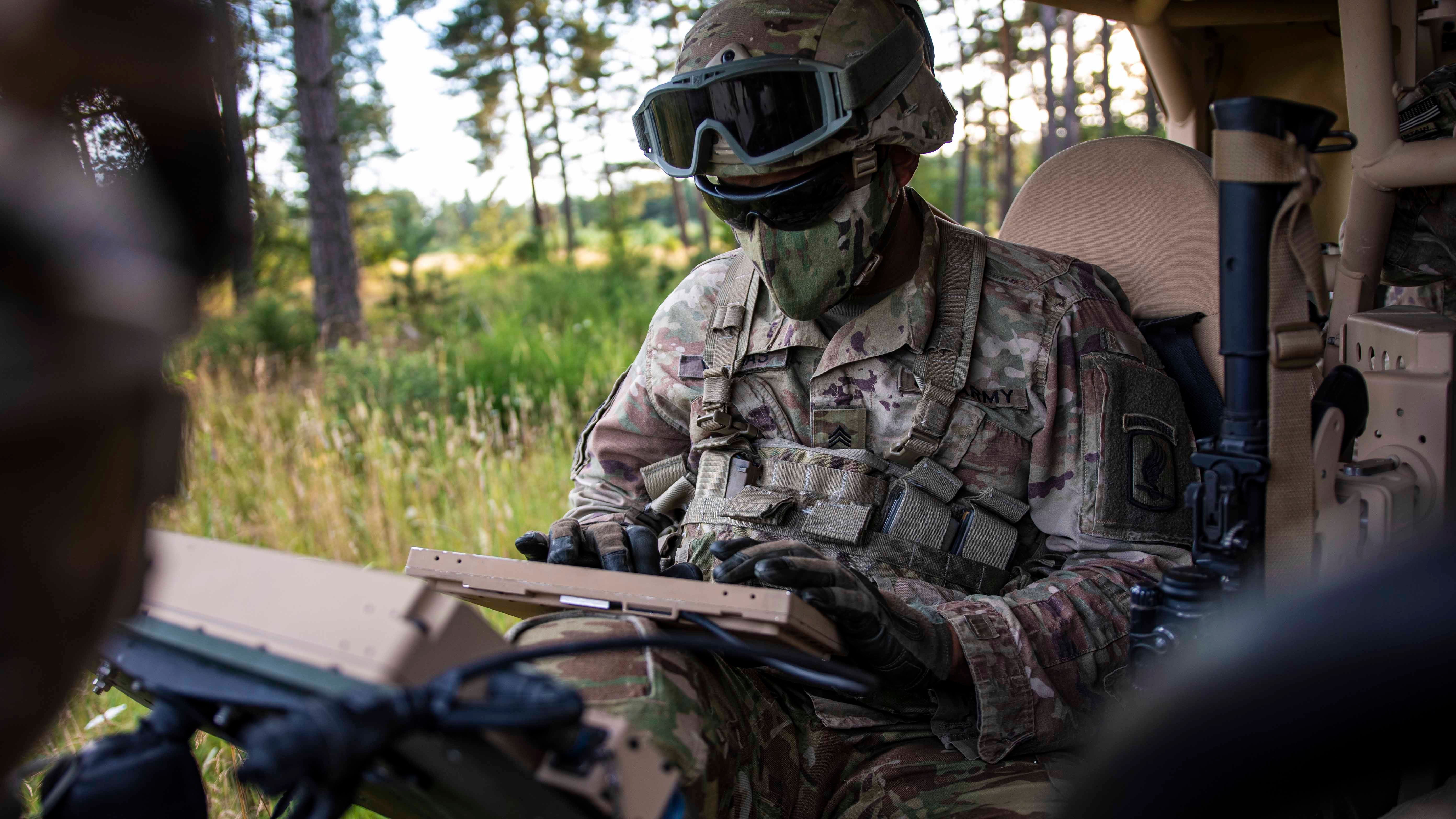Forces Must Evolve to Survive
Forces Must Evolve to Survive

Across the XVIII Airborne Corps, leaders have their eye on getting the most out of the data that proliferates on and off the battlefield.
“Whether in the military or business, if you’re not learning, you’re failing, and in our line of work, you’re dying,” said Brig. Gen. John Cogbill, then-chief of staff for the XVIII Airborne Corps. “You have to continue to evolve and to learn. You need to be able to not only survive on the modern battlefield but dominate the modern battlefield.”
Speaking July 28 at the Association of the U.S. Army’s inaugural Warfighter Summit and Exposition near Fort Bragg, North Carolina, Cogbill, who has since moved to a new assignment at U.S. Central Command, said the XVIII Airborne Corps is working to become a data-centric, data-enabled corps.
During a panel on innovation, Cogbill said this means giving commanders the best possible situational awareness so they can make the best decisions in the shortest amount of time. “In order to do that, you have to have data,” Cogbill said.
Understanding data—and making the most of it—doesn’t come naturally, he said. “We are not digital natives,” he said. “Data isn’t something that just jumps out at you, and you understand how to manage it, how to transport it, how to manipulate it and make it useful.”
Jared Summers, the corps’ technology officer, agreed. “The technology is there. It’s our ability to understand it, have the people to employ it, and, most important, it’s about our ability to learn and take chances and do something different.”
One key challenge is making data easily accessible, Summers said.
As an example, as America’s contingency corps, the XVIII Airborne Corps must be ready to deploy on no-notice and short-notice missions anywhere around the world. When the call to deploy comes, the deployment sequence, spanning more than a dozen systems across more than a dozen organizations, kicks in, Summers said.
“None of them talk directly or interact directly, so we have soldiers and airmen handing physical pieces of paper to each other to meet an 18-hour [deployment] sequence,” he said. “The physics is almost against you. … There’s a better way to do it, and that’s what we’ve been building.”
Connecting all those databases and processes makes the corps faster and better, Summers said. It also allows commanders to react more quickly and focus on the mission instead of paperwork, he said.
“We’re a learning organization that understands the value of data and doesn’t accept no for an answer and understands there’s a better way to do it,” he said.
Another challenge is protecting the data. There are many programs and practices to protect data, and the most important is encryption, Summers said. “You encrypt at rest, you encrypt at transport using NSA-approved methods,” he said.
The process is similar to that used by banks and other financial institutions, he said. “You can do all your banking on your phone or your computer, but you only have access to your data,” he said. “It’s the exact same type of zero-trust encryption practices and procedures we’re putting in place.”

